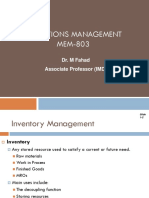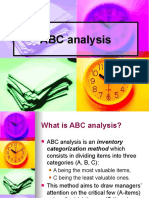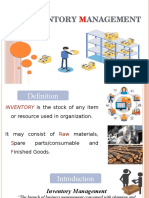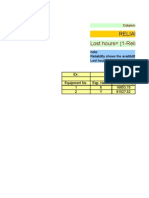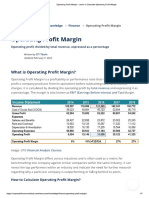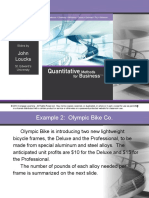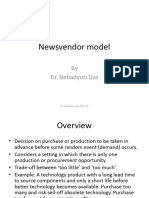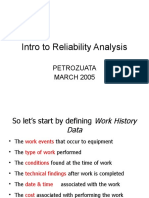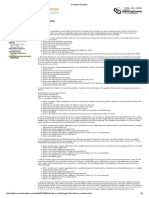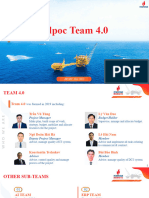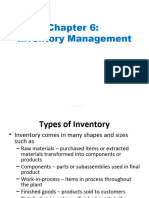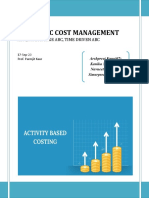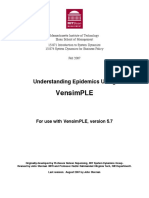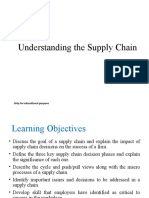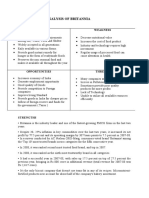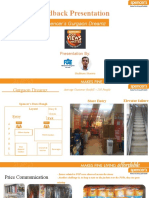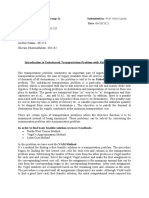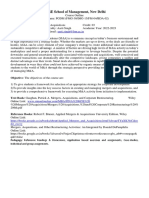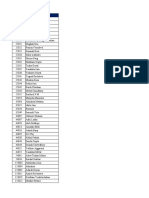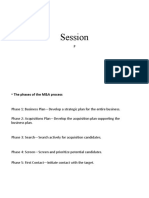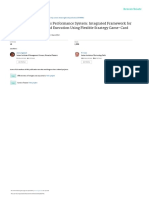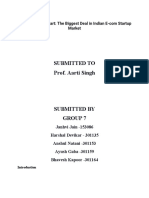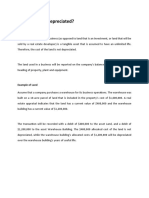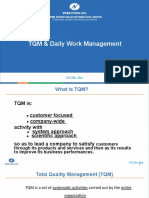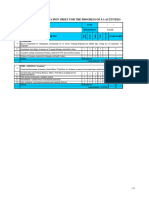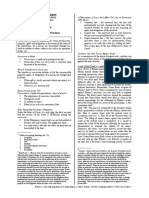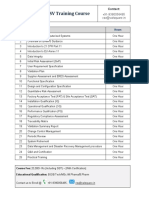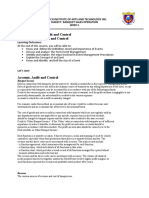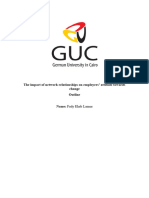0% found this document useful (0 votes)
94 views76 pagesInventory Management
This document provides an overview of inventory management in supply chains. It discusses the importance of inventory, different types of inventory, and how to manage inventory. Key concepts covered include ABC analysis to classify inventory items, using cycle counting to maintain accurate records, and different inventory models like economic order quantity to determine ordering quantities and frequencies. The objectives are to balance inventory investment costs with meeting customer demand.
Uploaded by
Anshul NataniCopyright
© © All Rights Reserved
We take content rights seriously. If you suspect this is your content, claim it here.
Available Formats
Download as PPTX, PDF, TXT or read online on Scribd
0% found this document useful (0 votes)
94 views76 pagesInventory Management
This document provides an overview of inventory management in supply chains. It discusses the importance of inventory, different types of inventory, and how to manage inventory. Key concepts covered include ABC analysis to classify inventory items, using cycle counting to maintain accurate records, and different inventory models like economic order quantity to determine ordering quantities and frequencies. The objectives are to balance inventory investment costs with meeting customer demand.
Uploaded by
Anshul NataniCopyright
© © All Rights Reserved
We take content rights seriously. If you suspect this is your content, claim it here.
Available Formats
Download as PPTX, PDF, TXT or read online on Scribd
/ 76
